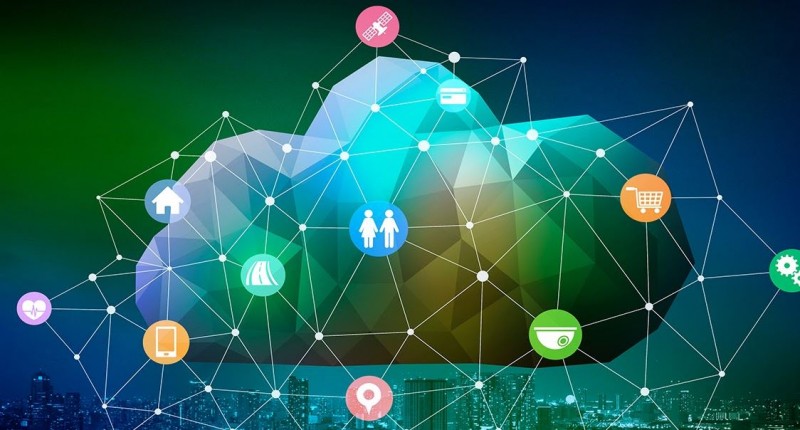
Imagine a world where data processing is not limited by geographical distances and latency is a thing of the past. Welcome to the realm of edge computing - a groundbreaking technology that is transforming the way data is handled, opening up new possibilities for innovation and efficiency. In this article, we'll explore the fascinating world of edge computing, understanding its advantages, use cases, and its role in shaping the future of data processing.
In this digital age, where data reigns supreme, traditional methods of data processing face challenges related to speed and efficiency. With the increasing adoption of technologies like the Internet of Things (IoT), autonomous vehicles, and augmented reality, the demand for real-time data processing has reached an all-time high. This is where edge computing comes into play, providing a decentralized approach to data processing, bringing computation closer to the data source.
What is Edge Computing?
Definition and Concept
Edge computing refers to a distributed computing paradigm where data is processed closer to the edge of the network, near the data source or end-user device, rather than being transmitted to a centralized data center or cloud server. This proximity to the data source reduces the latency, allowing for faster processing and decision-making.
How Edge Computing Works
In edge computing, small-scale data centers or edge servers are deployed at strategic locations, such as cell towers, industrial sites, or even on IoT devices themselves. These edge nodes collect and process data locally, only sending relevant information to the central data center or cloud, thereby reducing the volume of data that needs to be transmitted. This approach not only minimizes latency but also alleviates network congestion and reduces bandwidth requirements.
Advantages of Edge Computing
Edge computing offers a range of advantages that are driving its widespread adoption across various industries:
Reduced Latency
One of the primary benefits of edge computing is the significant reduction in latency. By processing data locally, edge devices can respond to real-time events instantaneously, making it ideal for applications where even milliseconds matter, such as autonomous vehicles and industrial automation.
Enhanced Security
With sensitive data being processed closer to the source, edge computing reduces the risk of data breaches during transmission. It also allows for better control and security measures at the edge, ensuring that critical information stays within the local network.
Cost-Efficiency
Edge computing optimizes data transfer by only transmitting essential information to the cloud, reducing bandwidth costs. Additionally, it enables organizations to make the most of their existing infrastructure, as data processing can be distributed across edge devices without overloading the central data center.
Improved Reliability
Since edge computing operates even in the absence of continuous connectivity to the cloud, it offers higher reliability and availability. This resilience is vital for mission-critical applications that cannot afford any downtime.
Use Cases of Edge Computing
Edge computing finds applications across various industries, revolutionizing the way certain technologies function. Some notable use cases include:
Internet of Things (IoT)
The IoT ecosystem heavily relies on edge computing to manage the vast amounts of data generated by connected devices. Edge nodes process sensor data locally, providing real-time responses and reducing the need for continuous cloud connectivity.
Autonomous Vehicles
Autonomous vehicles require split-second decision-making capabilities, which is made possible by edge computing. By processing data locally, self-driving cars can react to their surroundings without dependence on distant cloud servers.
Augmented Reality (AR) and Virtual Reality (VR)
AR and VR applications demand low latency to provide users with seamless and immersive experiences. Edge computing ensures that the processing of AR/VR data happens as close to the end-user as possible, delivering a more fluid and engaging user experience.
Edge Computing vs. Cloud Computing
Key Differences
While edge computing and cloud computing both involve data processing, they differ in their approach and use cases. Cloud computing relies on centralized data centers, catering to massive data storage and processing needs, while edge computing emphasizes localized processing for real-time applications.
Complementary Technologies
Edge computing and cloud computing are not mutually exclusive. In fact, they complement each other in various scenarios. Edge devices can offload non-time-critical tasks to the cloud, while the cloud can provide valuable insights and analysis based on the aggregated data from edge devices.
Challenges and Limitations of Edge Computing
While edge computing offers exciting prospects, it is not without its challenges:
Connectivity Issues
Edge computing heavily relies on network connectivity, and any disruptions can hinder data processing. Ensuring robust and reliable connections is essential to harnessing the full potential of edge computing.
Data Privacy Concerns
Processing data locally can raise concerns about data privacy and security. Organizations must implement stringent security measures to protect sensitive data at the edge.
Resource Constraints
Edge devices may have limited computational power and storage capacity. Optimizing algorithms and data compression techniques are essential to make the most of these resource-constrained devices.
The Future of Edge Computing
The future of edge computing looks promising. As more industries embrace digital transformation and technologies like 5G become ubiquitous, edge computing will play an even more significant role in shaping our connected world. Its ability to process data with unparalleled speed and efficiency will drive innovations and open doors to new possibilities.
Edge computing is revolutionizing the way we process data and reducing latency to previously unimaginable levels. By bringing computation closer to the data source, it offers reduced latency, enhanced security, cost-efficiency, and improved reliability. As edge computing continues to evolve, we can expect to witness more applications and advancements that will redefine the way we interact with technology.
Holographic Displays: Creating Interactive Visual Experiences